|
|
K
|
|
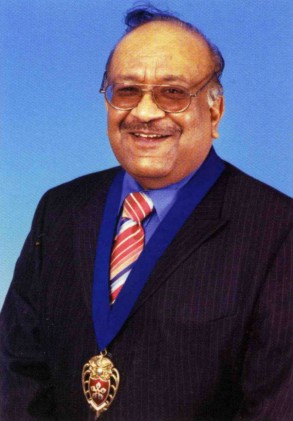 |
Born: Baroda, Gujarat, India, died: 20th November 2004 aged 53 (Labour)
Ramnik Kavia was born in Baroda, India and was educated at the Technical High School and at Kenya Polytechnic, Nairobi. He joined his family's engineering and fabrication business there. As a result of the Africanisation policies of the Kenyan government, he had to leave the country and arrived in Leicester in December 1974 where worked with a number of local firms. He was elected to the Leicester City Council in 1986, representing Latimer ward and then Belgrave from 1996. He served on numerous committees and his main interest was planning and regeneration. He was Lord Mayor of Leicester for the year 2003-2004. He also served as governor at Catherine Infants and Junior Schools.
He died following heart bypass surgery, when a drug intended to be taken orally was injected straight into his bloodstream. His brother Amrit was elected to the Council in the bye-election that followed. Tragically, he died three months after being elected.
Sources: Leicester City Council, Roll of Lord Mayors 1928-2000, author’s personal knowledge
|
.jpg) |
Born: Indian Ocean, 20th Feb 1868, died: 1953 (I.L.P. & Labour Party)
Charles Edward Keene was born to regular soldier on a sailing ship en route to India on the Indian Ocean. His father was in the Indian Army and he was educated at an Indian army school. He returned to Britain in his late teens. Following the death of his father, his mother remarried, but his stepfather’s excessive drinking brought ruin to the family. Charles was forced to sell newspapers on the streets of Bradford to supplement the family income. As a result he was a lifelong supporter of the Temperance Movement.
He came to Leicester from Bradford with 6/- in his pocket in 1899 and successfully established several different businesses in the city, which included the Mutual Clothing and Supply Company, as well as box manufacture and die stamping. He was an ardent speaker on behalf of the Leicester Temperance Society and was associated with the Belgrave Hall Wesleyan Church. Thomas Redfern recalled that Keene was a good speaker, in the ‘Methodist style’, who generally spoke in a conciliatory manner. He was involved in leading the unemployed in 1921. He had been an unsuccessful labour candidate six times in elections for the City Council before getting elected for Aylestone in 1924. He held various positions in the Independent Labour Party and succeeded George Banton as president of the I.L.P. in 1924. He retired from the Council in 1938.
Sources: Leicester Pioneer, 8th February 1924, Howes, C. (ed), Leicester: Its Civic, Industrial, Institutional and Social Life, Leicester 1927
|
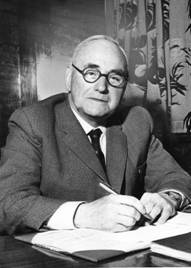 |
Born: Bradford 21st Sept 1891 died: 1977 (I.L.P. & Labour Party)
Charles Robert Keene was one of a family of 12 and attended Harrison Road School. After working with in his father’s business, he began to study for the Wesleyan ministry. However, he enlisted in the RAMC in 1915 and within a few months was promoted to the rank of sergeant. He spent 4½ years with the forces, chiefly in the Hospital Ship services in the Mediterranean.
On returning to civilian life, Charles Keene resumed his activities at the Clarendon Park Wesleyan Church, where he occupied various offices including Circuit Temperance secretary and society class leader. He also returned to his business career, becoming managing director of his father’s business the Mutual Clothing and Supply Company and Kingstone Ltd during the late 1920s.
He became a City Councillor for Charnwood in 1926 and was secretary of the Labour Group for nine years during the 1930s. He became its leader in 1940 and was also chairman for three years. He became chairman of the Planning Committee in 1946 and led the City’s slum clearance and redevelopment programme during the 1950s and 60s. He was Lord Mayor in 1953 and was dominant in the field of education until 1960. (He had to retire from chairing the Education Committee because he had reached the age of 70)
He was an opponent of comprehensive education and ensured the retention of the 11 plus exam in Leicester. He was awarded the freedom of the City in 1962 and until 1999 was commemorated by Charles Keene College-now Leicester College. In later life he lived in Gaulby.
Sources: Howes, C. (ed), Leicester: Its Civic, Industrial, Institutional and Social Life, Leicester 1927, Leicester City Council, Roll of Lord Mayors 1928-2000
|
|
Born: circa 1831, Nottinghamshire died: July-Sept 1908
Edward Kell was a shoe rivetter and a Liberal-Radical of the old school. He became the first president (part-time) of the National Union of Operative Boot and Shoe Rivetters and Finishers in 1883. He was elected to the School Board and to the Town Council. Along with George Sedgewick, he used his position on the School Board to campaign against children working at home. He resigned from the presidency in July 1890, shortly after attacking the militant movement in the union which was then led by T. F. Richards among others.
Sources: Fox, Alan, A History of the National Union of Boot and Shoe Workers,1958, Census returns
|
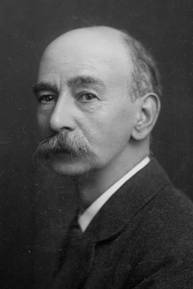 |
Born: 5th October 1865 (I.L.P.& Labour Party)
J.K. Kelly left the Clyde Street Wesleyan school at the age of 13 and after working as an errand boy, he then trained as a minister and entered the Methodist Ministry in the early 1890s. In 1893. he was drawn to socialism after reading Robert Blatchford’s ‘Merrie England.’ He left the ministry in 1900 and became a dentist, opening a practice in the Thomas Cook building close to the Clock Tower. He was well known as a public speaker and apparently he won many 'converts' by his powerful oratory. Following the refusal of the Labour Party nationally to support the candidature of Geo Banton for parliamentary by-election in 1913, he gave his support to the British Socialist Party’s candidate Hartley.
James Kelly was elected to the Board of Guardians for 1907-10 for Abbey ward and was a Town Councillor from 1909-23.
Although he claimed he was never a jingo, he fully supported the First World War. In 1917, he briefly resigned from the I.L.P. and gave his support to the National Socialist Party (the pro war faction of the B.S.P.) He chaired one or two meetings and was even touted as a possible candidate to stand against MacDonald. He must have had second thoughts about this and remained in the I.L.P. and Labour Party.
He was president of the I.L.P. and chairman of the Labour Party (1921) at various times. In 1921, he moved a resolution, which condemned the action of the police in dealing with a demonstration by the unemployed in Rupert Street, saying:
“when the wounds were in the main part on the back of the head, it was natural that feelings of anger would be provoked and deeds of resentment would be committed.”
He was a a friend and admirer of Tom Barclay and edited Barclay’s memoirs published in 1934. In 1937, along with Will Owen, he supported the Unity campaign to bring about a united front between the I.L.P. Communist Party and Labour party. He was also a member of the Left Book Club in the late 1930s.
Sources: Justice 14th June 1917, Leicester Pioneer, 21st March 1924
|
|
Born: Quorn (Liberal & Co-operator)
Samuel Kemp was the eldest of nine children and started work at the age of 10½ in a shoe factory. He eventually ended up working at the Leicester Co-operative Hosiery Society’s factory in Cranbourne Street and remained there for12½ years until it was bought by C.W.S. He represented the union on the Trades Council and served on the executive of the union. He was elected to the board of L.C.S. in 1897.He was elected president Wigston Hosiers in 1909 and continued in those positions well into the 1920s. He was also on the committee of the Leicester Co-operative Press. He was vice president of the East Leicester Liberal Association in 1926.
Sources: Leicester Co-operative Society, (1898) Co-operation in Leicester, Leicester: A Souvenir of the 47th Co-operative Congress, Manchester 1915
|
|
Born: 1868. died Westbourne Street, Leicester 5th January 1935 (I.L.P.& Labour Party)
Albert Kenney left Elbow Lane School at the age of 9 to work at Burrows brickyards for 1/- or 2/-per week. Then went into the hosiery trimming trade working for Messrs Hawley and Johnston's where he became an active trade unionist, acting as negotiator in various trades disputes on behalf of the Trimmers Society. He was president of the Leicester Trimmers Union for 37 years years. He spent over 30 years on the Trades Council and was president in 1905 & 1924.
He had a reputation as the ’John Blunt’ of the Labour movement, always frank and outspoken and willing to call a spade a spade. He was elected to the Town Council in 1905 for Aylestone and was reported to have appealed to the voters because “he was in favour of finding work for the workless, decent housing and the feeding of starving children.” He was chair of the Unemployed Committee and active in the Right To Work Agitation in the 1900s. He became an alderman in 1926. He retired from the council in 1931 after a breakdown in his health. He was treasurer of the Labour Party 1903-1910? and was member of the Leicester Labour Party Executive and president of the Leicester Auxiliary Workers Association.
Sources: Leicester Pioneer 10th October 1908, 1st February 1924, Leicester Mercury, 7th January 1935
|
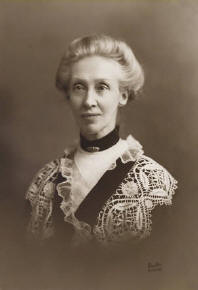 |
Born 1851, died: 1924 (Women’s Liberal Association)
Agnes Kilgour came to Leicester from Cheltenham to become headmistress of the Belmont House School on New Walk. She was Anna Beale’s partner and successor. In 1887, she became the first joint secretary of the Leicester and Leicestershire Women’s Suffrage Association. Agnes Evans, as she was after 1895, was a co-opted member of the Council’s education committee. She was also a member of the School Board and persuaded its chairman Joseph Woods to start kindergartens in elementary schools.
She worked with Catherine Gittins to establish the Leicester branch of the National Union of Women Workers (later National Council of Women) In 1906, she became the first president of the Health Society which had been established that year with the aim of a reducing infant mortality in the town, through educating mothers. She was also a committee member of the Women’s Liberal Association.
Sources: Isabel Ellis, Records Of Nineteenth Century Leicester , Shirley Aucott, Mothercraft and Maternity,1997
|
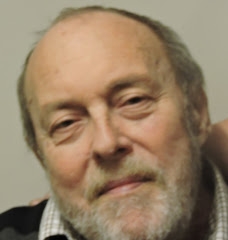 |
Born Leeds 1942, died: Syston 2018 (Labour Party)
Dave Knaggs came to Leicester in 1972 to teach at Wreake Valley College where he became head of the sixth form. In the 1970s, Wreake Valley College, like Countesthorpe College, was pioneering a new approach in secondary education. This not only applied to the school’s curriculum, but also to its organisation and management. At that time, the head teacher, Emmeline Garnett, had devolved decision making to a democratic structure within based around a weekly meeting of all staff, where issues of policy and financed were discussed and voted upon.
The school was not streamed and mixed ability groups were the order of the day. Subjects like English, Geography Sociology and History were integrated a single Humanities curriculum and the encouragement of critical thinking rather than rote learning was fundamental to the college’s approach. These progressive developments in education encouraged many teachers, like Dave, to apply for jobs in Leicestershire. Dave was also in the NUT and in 1974, when teachers won a substantial pay rise after the Houghton Report, he did not support the recommendations within because they widened pay differentials and consequently took part in unofficial action in protest.
Dave became involved in the community and party politics in Thurmaston and Charnwood and was involved at village, borough, county and national level. At one time he was a parish, district and a county councillor, being known as councillor, councillor, councillor Knaggs. He held Thurmaston for Labour for many years.
In 1974, he was the Labour Parliamentary candidate for Melton and in the two elections of that year he received a respectable vote for Labour in a true blue constituency. In 1997, he stood against Stephen Dorrell for Charnwood, loosing by 5,900 votes having gained 36% of the votes cast.
At the age of 63, he stood down from the County Council having been its Chairman and was subsequently elected as an Honorary Alderman. Following a redrawing of ward boundaries, both Dave and his wife Janet were defeated in Syston West in 2015, whilst his two daughters, Kate and Rebecca were defeated in Thurmaston.
Dave was a very sociable and larger than life character who was on the left of the Labour Party. He was an opponent of Trident and a supporter of Jeremy Corbyn who would have been happy to see Tony Blair expelled from the Labour Party. In 2016, as a critic of Israel's treatment of Palestinians he advocated free speech about Israel and deplored the use of anti-Semitism smears against Jeremy Corbyn.
Sources: author's personal knowledge, Dave Knagg's facebook pages
|
|
Born: 7th August 1817, Hareup, Northumberland, died: 5th July 1899, Longbenton, Northumberland (Chartist)
In 1844, shoemaker and newsagent Thomas Knox was summoned to appear as a witness on behalf of a policeman who had been assaulted. Knox had received several kicks in the course of helping the policeman. He had also taken care of the constable's lamp, which had found in the street and had taken to the Police Station the next day. When Knox was given the Bible to swear on in court, he told John Biggs, the magistrate, that he wished to affirm. Biggs asked why he objected to being sworn and Knox answered that he did not believe in future rewards and punishments and told Biggs that he did not believe in a God. This caused a sensation in the court, and Knox was immediately ordered down. On applying for remuneration for loss of time from work he was informed that his evidence was of no use. He was informed that he should have told them he was an atheist. This information was supplied to Holyoake's paper The Movement by the Owenite Missionary A. Q. Campbell. (the 1860s, ampbell invented the Co-op dividend)
In 1845, Knox moved from Sanvey Gate to Thomas Cooper's former coffee house at, 11 Church Gate. He provided a reading room which the papers: the Movement, New Moral World, Punch, the Northern Star etc, A Discussion Class was also started and one subject was: "The Elevation of Woman, and the best means of raising her from her present position,"
Knox then moved to Belgrave Gate c1847 and his shop was used as a place to drop off the Chartist petitions which were to be presented to Parliament in 1848. Soon after Knox must have returned to his native Northumberland with his Leicestershire born wife Ann Larrad.
Sources: The Movement, 23rd March & 27th April 1844, 12th March 1845, History, Gazetteer & Directory of Leicestershire & Rutland, 1846
|
|
L
|
|
|
Born: Leicester 1881, died: Manchester 1955 (I.L.P. & Labour Party)
In the 1890s, Tom Larrad's family lived on Taylor Street next door to Joseph Sharp, the secretary of the Trades Council. Tom was apprenticed on a local newspaper and eventually became a compositor. After reading Blatchford's "Merrie England, " he joined the 1LP aged 15. He attended a Working Men's College (Vaughan?) and also took a correspondence course at Ruskin College. By 1908, he had become secretary of the Leicester I.L.P., spoke at public meetings, was a member of the EC of the Leicester Labour Party and had been on Ramsay McDonald's election committee.
In 1911, he moved to Manchester where he played a significant role in Labour politics in the 1920s & 1930s. In 1921, he took part in a newspaper strike and jointly edited an evening 'strike' paper. In.1923, he became a full time Labour Party agent for Ardwick District Labour Party and also worked as a secretary for the Manchester I.L.P Central branch. In 1924, he took part in an unemployed march to London. He also became a Manchester councillor. It is not known what the relationship of Tom Larrad's family was to that of William Larrad below.
Sources: Declan McHugh, A 'Mass' Party Frustrated? The Development of the Labour Party in Manchester, 1918-31, 2001, Leicester Chronicle, 6th June 1908, 3rd July 1909, 11th Sept 1911, Census returns
|
|
Born Leicester, 23rd November 1870, died Leicester December 1957 (I.L.P)
W.A. Larrad was a boot blocking machine operator, prominent spiritualist and was elected assistant secretary of the I.L.P. at its AGM in 1895. In 1908 he wrote: “A Romance of A Board of Guardians” which was published in weekly instalments in the Leicester Pioneer. It tells of the just deserts handed out to the local guardians by a reforming government for the crime of driving the unemployed to suicide. In a letter to Leicester Daily Post in 1906 he describes the 'Labour Test' where the unemployed were given manual labour:
The whole idea of the test and the spirit in which it should be carried out is that if an able-bodied man applies to the Guardians they should be able to test his bone-fides. He is offered a task disagreeable, and with a low rate of payment, not as work for wages, but as a test. Hence its name. But when it is applied to a man week after week, and year after year, as all test and nothing else behind it, the whole business is made absurd. Surely it is about time that this as a system of relief went into the melting-pot of Parliamentary reform, and something fresh in the way of legislation was brought forward, which, as well as giving relief for the time being, would put a man on his legs again.
Larrad was also a photographer who supplied pictures to the Leicester Pioneer. It is likely that he took the celebrated photos of the march of the unemployed to London in 1905. He also photographed the burnt out shell of St George's Church in 1911. He lived on Willow Street and was active in support of Labour in the Latimer ward.
In 1921, following George White's suicide, he was appointed as secretary to the Distress Committee. In the wake of the unemployed demonstrations and riot of that year, the Committee began, rather late in the day, to operate a scheme to provide work for the unemployed. This was in conjunction with the Guardians and City Council. He continued to work in the Public Assistance Department until he retired.
His brother Charles Larrad, born Dec 1868 was one of the founders to the Leicester Labour Party, he moved to Derby in 1910.
Sources: Leicester Daily Post, 5th December 1906, Leicester Pioneer July 11th, 29th August, 19th September 1908, Leicester Daily Post, 13th January 1921, census returns
|
 |
Born Leicester 1941, died: Leicester, Sunday 19 June 2016
Ken was a long-standing campaigner for peace, anti racism, workers' rights and equality. He was a regular attendee at demonstrations for peace and against government cuts. At a time when the peace movement had almost gone out of political fashion, Ken Last was Leicester CND. As its Leicester contact, he kept Leicester CND going through the 1970s Thanks to him, the local group ticked over until it was reinvigorated as a result of the cruise missile debacle in the early 1980s.
Ken worked as a school caretaker as well as for Jacob's Cream Crackers. In later years, he was known to many for his support of local music, particularly the folk scene and was a regular at the Musician. The photo is from a CND lobby of the Labour Party conference in 1989.
Sources: Sue Barton, author's personal knowledge
|
|
Born Leicestershire c1843 (Leicester Rivetters’ and Finishers’ Section)
In the early 1870s, Martin Leader was the secretary of the Leicester Rivetters’ and Finishers’ Section of the old Amalgamated Cordwainers’ Association. In 1873, he was the chief architect of a secession from the parent union which led to the formation of the National Union of Boot and Shoe Workers. The mechanisation of the industry probably made this split inevitable, though Leader added a degree of acrimony to the whole affair. He was also involved in an attempt to set up co-operative shoe manufacturing society with William Inskip and Thomas Smith. He was a member of the School Board from 1876-77. By the 1880s, he had become a struggling small-scale employer employing 56 men and boys. After loosing money for many years, he became bankrupt in 1894.
Sources: Leicester Chronicle, 2nd June 1894, Bill Lancaster, Radicalism Co-operation and Socialism, Alan Fox, A History of the National Union of Boot and Shoe Workers, 1958, census returns
|
|
Born: Hucknall, Notts 1879 (I.L.P.& Labour Party)
Maria Leafe was the daughter of an unemployed miner and wanted to become a teacher. Although she did well at school, her family circumstances meant that it was impossible for her her to continue with her education. Consequently, she left school at the age of 13 to help her father in a general store he had taken on.
In 1902, she married a railway clerk and came to Leicester. She became the first secretary of the Leicester Railway Women’s Guild and became minute secretary of the Women’s Labour League. In 1910 she has joined the I.L.P. and later became president of the Women’s Section of the Labour Party.
During the 1919 railway strike, she played a prominent role as a speaker in support of the railwaymen’s cause. She was much in demand as a speaker in the Market Place and elsewhere. She was elected to the Board of Guardians in 1924 and stood for the council for Aylestone in 1925.
Sources: Leicester Pioneer, 29th February 1924
|
|
Born April 15 1934, died June 1981 (Indian Workers’ Association G.B.)
K.S. Lehal was an activist in the Indian Workers Association (GB) and the Communist Party of India (Marxist) He was a founder member of the Inter Racial Solidarity Campaign (IRSC) in 1969 and active in the anti racist demonstrations and campaigns of the 1970s.
Source: author’s personal knowledge
|
|
Born 9th February 1962, died 17th December 1999 (Socialist Workers Party)
From 1995, Nick Lee-Overy was a youth worker at Highfields Community Centre and died suddenly at the age of 37. He was a political activist throughout his adult life, joining the Labour Party and CND whilst in his teens. He became a Socialist Workers Party member in 1993, following an Anti Nazi League demonstration. He became branch secretary of Leicester East S.W.P. and was international officer for Leicester City UNISON. He played a central role in anti-deportation campaigns and moves to integrate asylum seekers into the local community.
Source: Socialist Worker
|
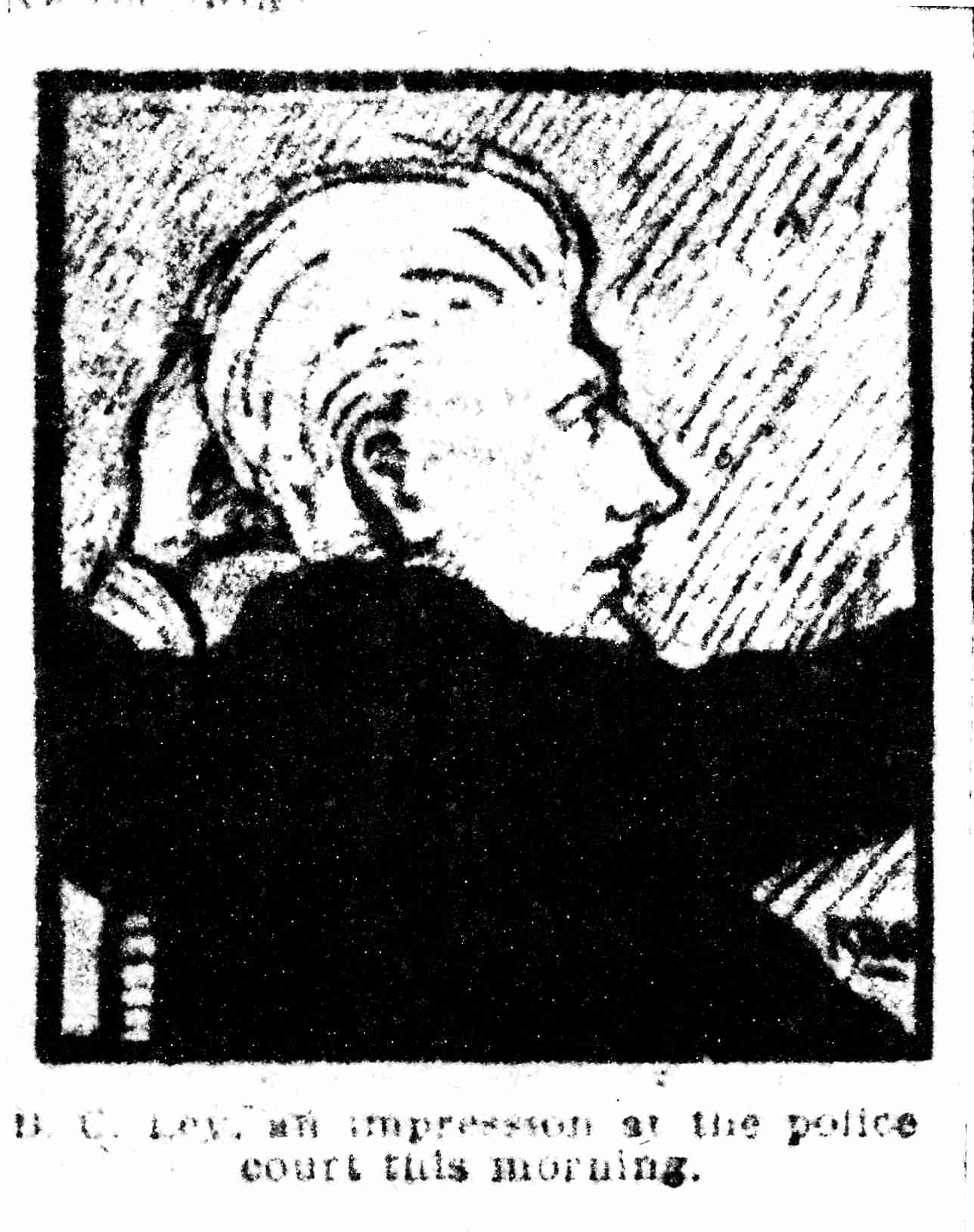 |
Born: c1896
Charles Ley was elected as Chairman of the Unemployed Executive in 1921. He was arrested by the police shortly after a demonstration outside the Poor Law offices in Rupert Street. Following his arrest, a 3,000 strong crowd converged on the police station in the Town Hall where he was being held to demand his release. The police were trapped inside extinguishing their lights, leaving the Town Hall in complete darkness.
Accidentally the crowd pushed the front row of their comrades into the station where they were promptly arrested. It was then that the missiles began to fly. A glass bottle shattered on the floor inside the entrance and a volley of stones, bricks and granite sets followed, hitting two policemen. The police then emerged from the station, many with batons drawn, whilst reinforcements in the shape of mounted police arrived at the rear. The demonstration promptly scattered.
At his trial, Ley was accused of kicking a police inspector. Ley's late employer gave evidence to his good character and industriousness. A number of witnesses also testified, that prior to his arrest he had not been injured. He was sent to prison for one month.
Source: Leicester Pioneer Sept 1921
|
|
Born: Belgrave circa 1883 (W.S.P.U.)
Eva Lines was a Board School teacher at Ellis Avenue School and an active Suffragette prior to World War One.
Sources: Sources: Richard Whitmore, Alice Hawkins and the Suffragette Movement in Edwardian Leicester, Papers of Annie Lines
|
|
Born Sheffield 8th January 1875. died: Henley, Oxfordshire 17th July 1956, (Women’s Liberal Association, WSPU)
Isobel Logan was a committed Liberal and the founder of the Harborough Women’s Liberal Association and its secretary and president. Her father was the wealthy John William Logan or "Paddy" Logan, the Liberal MP for Market Harborough. (see below) She frequently accompanied her father on speaking engagements, sometimes speaking herself.
In 1894, the 19 year old Isobel, sat on the platform with her father and delivered an address pointing out that married women were not prevented from voting in local elections provided they were not qualified in respect to the same property as their husbands. She urged women to them to take the full advantage of this right. She played in the Women's cricket team for East Langton.
Isobel had become increasingly dissatisfied by the lack of action by the Women’s Liberal Association on the question of women’s rights. In 1908, she resigned from the presidency of the Association, saying it that ‘the question of women's suffrage is so important and its continued denial so great an injustice to women, that it is impossible for me to belong to an association that does not put the question before others.’
She cut quite a dash when she attended suffrage meetings in a motor car and soon after joining the WSPU, she took employment as a bookbinder. In June 1908, she was among 27 women who were arrested following a deputation to Parliament when windows were smashed in Whitehall and Downing Street. Rather than pay a fine, she opted to go prison. Her father was reported to be very proud of his daughter. Dorothy Pethwick and Dorothy Bowker (both WSPU organisers) were imprisoned with her and later came to Leicester to recuperate after being on hunger strike. Her father wrote:
My daughter Isabel has just come home, so I learn at first hand the punishment meted out to her and twenty-five other women for the awful crime of endeavouring to make a speech in Parliament-square in support of their belief that in justice and equity women cannot be denied a voice in the selection of those who make the laws that they are compelled to obey. Do the men and women of England really know that these political prisoners have solitary confinement twenty-three hours out of every twenty-four!
Following her release, she continued to speak on the issue of women's suffrage and sweated labour and at one meeting she spoke for an hour and half. In 1939, she was living in Henley with her private secretary and two domestic servants.
Sources: Census, New York Times, July 2nd 1908, Leicester Chronicle, 10th November 1894, 9th March 1895, 9th May 1908 15th April 1911, Leicester Daily Post 3rd & 14th July 1908, Richard Whitmore, Alice Hawkins and the Suffragette Movement in Edwardian Leicester
|
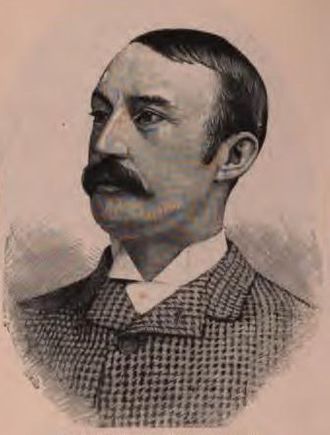
.jpg)
A Land Nationalisation conference organised in March 1918.
|
Born: 1845 Newport, Monmouthshire, died: East Langton 25th May 1925 (Liberal)
John William Logan or "Paddy" Logan was the Liberal MP for Market Harborough from 1891-1904 and 1910-1916. He became head of the firm of Logan and Hemingway, engineers and railway contractors, who carried out some very big works, including a long stretch of the Great Central Railway from Sheffield to London. The Great Northern Railway, from Rockingham through Medbourne to Leicester was also constructed by his firm. Logan moved to Leicestershire in 1876 to supervise his railway contract and his family lived at East Langton Grange. He later gave the village a cricket ground and a hall and also maintained a cottage home for the children of men killed on his works.
Until 1888, Logan was an active Conservative supporter. This changed after he visited Ireland where he was shocked by the large scale poverty and he became a radical and a supporter of Irish home rule. He was not Irish and his nickname 'Paddy' derives from his campaigning on the issue of Ireland. Logan's electioneering seems to have begun in 1890, some time before the incumbent Tory MP died in April 1891. Logan's consequent election bye-election campaign was based around the twin issues of land and Ireland. The question of Land Nationalisation had just come to the fore and he used many of its arguments during his campaign.
The struggle in Ireland was a straggle between landlord and tenant, between the man who had got the land and the man who had not got the land, between the man who tilled the land and the man who stood idly by pocketing the greater proportion of the other man's earnings; while at the same time he constantly raised the rent as the man improved the land. (Hear, hear.) They were getting to understand the proper relations between the land of a country and the people whom the Almighty had placed upon that land. (Applause)
Logan also spoke of the plight of farm labourers being driven off the land and forced to go and work in towns and criticised land owners for not providing villages with piped water and decent sanitation.
It seemed to him monstrous that these lands should have been taken away from the people, and it was doubly monstrous, in his opinion, that those who benefited by that transaction should to-day throw upon the farmers, small tradesmen, and labourers the burden of maintaining the poor, who were created by this system of confiscating the common lands. (Applause.) It seemed to him that in this question of common lands they might very likely find a solution of the unemployed question.
During his campaign, he was often denied the use of public halls and held his meetings in the open air or under canvas in what he called the "free speech tent." He also had a wooden hall built in section, which he had carted on several drays to places around the constituency where he could not get accommodation. In later elections, he had no such problem.
In 1891, his candidacy received the backing of Leicester Trades Council after he indicated that he was in favour of the ten hour day, the removal of the death penalty and stood for universal manhood suffrage. Logan won Harborough from the Tories by 487 votes. In Parliament, he spoke with eloquence of the poverty of farm labourers and the greed of landowners.
In 1893, he was at the centre of 20 minute brawl in the House of Commons involving Edward Carson and Irish Nationalists. This followed an ill-tempered debate on the Irish Home Rule Bill. In 1895, he spoke on the Land Question to a packed meeting organised by Leicester Trades Council.
Logan won every election in which he was a candidate. This testifies to the vigour of his campaigns which toured every village and the strength of his personality. He resigned as MP on two occasions, firstly in 1904, after a hunting accident. His political career was devoted to improving the lot of agricultural labourers and it was in their interests that he had agreed to stand for parliament on the second occasion for the second general election of 1910, only to resign again six years later on health grounds.
Logan was a very energetic individual, being able to combine managing a large business, a political career and vigorous campaigning with riding with the Fernie Hounds. Logan was also a pioneer of long distance pigeon racing and bred pigeons which sold for extraordinary prices. He was also a JP and member of the Board of Guardians and the Rural District Council. In 1914, he backed the First World War saying it was a choice of 'win or go under,' and urged men to enlist. His son was later died in France whihlst on active service. In 1918, he organised a conference in Leicester on land nationalisation which was supported by local Labour politicians. (He had become president of the Land Nationalisation Society in 1914) The meeting advocated vesting the ownership of all land in the appropriate local authorities so it could be used for the benefit of the whole community. Pending this, it wanted to see a valuation of land so it could be fairly taxed. Logan remained active in local politics until the 1920s.
The role of the Liberal Unionists in preventing home rule and the refusal of the Liberal government to give women the vote meant that Logan was not always comfortable with his adopted party. It was not surprising to find that in 1924, Logan published a letter saying he was going to vote for Joseph Hyder, the Labour candidate for Harborough. (Hyder was also secretary of the Land Nationalisation Society.)
Win you will, if the working men and women in the division are true to the best interests of themselves and their families, and give Snowden the opportunity of bringing in another budget and MacDonald the power to continue his good work on behalf of the masses.
Sources: Leicester Chronicle 15th November 1890, 14th February 1891, 9th February 1895, Leicester Daily Post 23rd February 1895, 22nd & 25th March 1918, Melton Mowbray Mercury and Oakham and Uppingham News, 3rd September 1914, Nottingham Journal, 27th May 1925, Market Harborough Advertiser and Midland Mail, 17th October 1924, 29th May 1925.
|
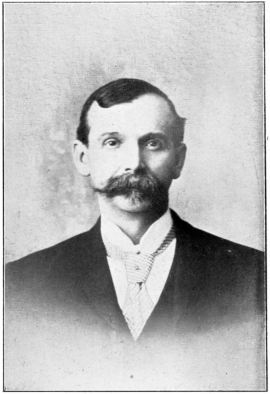 |
Born: Leicester c1856 died 1921 (NUBSO & I.L.P.)
William Lowe was the son of a framework knitter and he became a clicker in the shoe trade. He was active in the union and became secretary of the Leicester No 2 branch of NUBSO shortly after it was formed in 1890. In 1891, he was elected as treasurer of the National Union and a member of the National executive. He was also treasurer of the Trades Council, where, in 1902, he opposed a proposition from the I.L.P. to give women the vote. In 1908, he was one of the Labour candidate for Westcotes, by which time his wife Amy Jane Lowe (born Bedford c1856-1940) had become an active suffragette. He was one of Leicester’s five ’working men magistrates,’ featured in local Labour publicity in 1911.
Sources: Alan Fox, A History of the National Union of Boot and Shoe Workers, 1958, Census, Richard Whitmore, Alice Hawkins and the Suffragette Movement in Edwardian Leicester, The Labour Party Conference 1911, Official Souvenir, Leicester 1911
|
|
Born: 9th Apr 1943, died December 1994 (Communist Party)
Pete Lowman was an official of the National Union of Hosiery and Knitwear Workers Union during from the 1970s until his death at the age of 51. He was a member of the Communist Party and a director of the Leicestershire Co-op. Although he had a pragmatic approach to politics in Britain, he did not share the British Communist Party’s condemnation of the Soviet invasions of Czechoslovakia and Afghanistan.
Source: author’s personal knowledge
|
|
Born: Market Bosworth, circa 1836 died: May 1908 (Liberal & Co-operator)
Amos Lythall was president of the L.C.S. from 1893-1908. He was a well known temperance advocate and a Liberal who was described as “A man of strong conviction, when he had made his up his mind….he would stand by it even if he stood alone.” He was a boot factor or dealer. He was also a supporter of the co-operative productive societies like Equity shoes. In 1890 he told the Co-operative Congress that:
the Wholesale Societies ought to be the medium for distributing the goods produced by the productive societies, but instead of doing that they (the Wholesale) were doing their utmost to crush some of these out of existence. (“ No”) It was of no use for small productive societies to attempt federating together while they had all the resources of the great Wholesale to fight against.
After turning on the new electric lights in the co-op store in High Street for the first time in 1893, Lythall said,
....co-operators wanted no revolution and no anarchy, they merely wanted just and equal laws for everyone - a fair field and no favour. The whole management of their system was by working-men for working-men generally. (Applause.) He was convinced that if working-men joined that society in time of prosperity they would accumulate sufficient profits to enable them to tide over any time of depression, and there would not be the distress and poverty that now existed. If the money spent in drink were invested in the co-operative movement such a thing as poverty would be unknown.
Sources: Co-operative News 13th December 1890, Leicester Chronicle 30th December 1893, Leicester Co-operative Record June 1908, Leicester: A Souvenir of the 47th Co-operative Congress, Manchester 1915
|
|
|
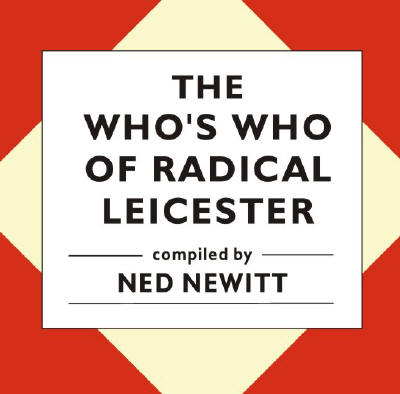 |
Back to Top |
|
© Ned Newitt Last revised: September 14, 2024.
|
|
|
Bl-Bz
Leicester's
Radical History
These are pages of articles on different topics.
Contact
|
